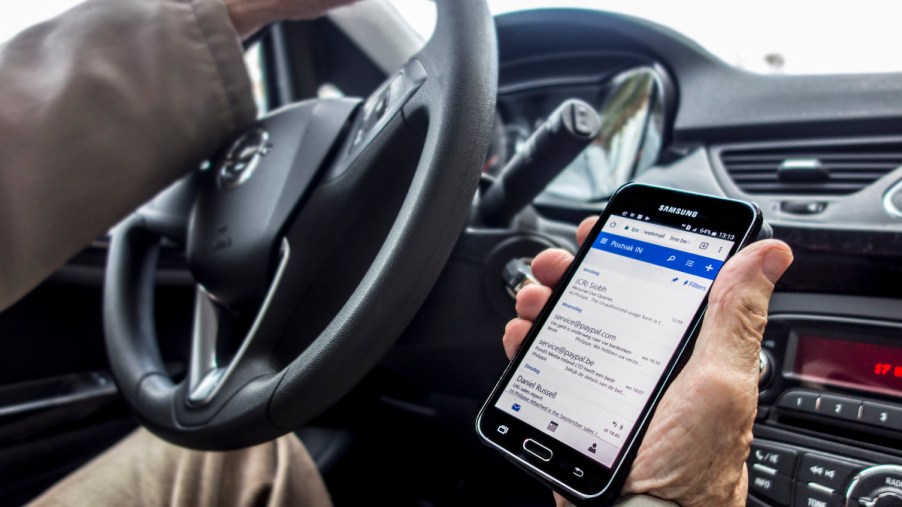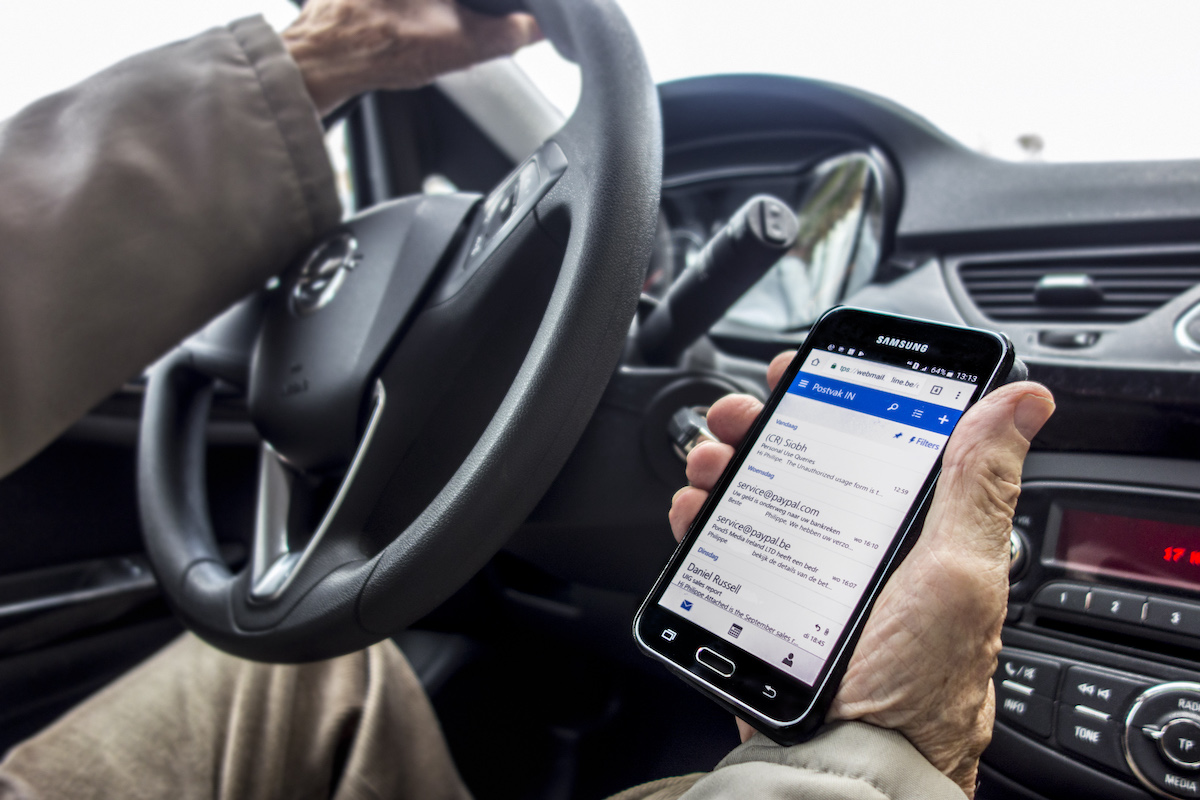
April Is Distracted Driver Awareness Month: The Tragic Death That Started It
For car safety, drivers shouldn’t rely on advanced technology and crash test scores to protect them. It also comes down to making sound decisions behind the wheel. Distracted driving is the complete opposite of that.
Texting is the most common driver distraction. It’s not only dangerous but also illegal in many areas; if you get caught, a police officer will likely write you a ticket. It also leads to many tragic accidents, such as the one that prompted Distracted Driver Awareness Month in April.
Distracted driving by the numbers

According to the National Safety Council, deaths related to distracted driving continue to climb each year. In 2020, distracted motorists caused the deaths of 3,142 people.
The NSC breaks down incidents of distracted driving into three types. Cognitive distraction refers to thinking about something else other than driving. You could be planning when to grab a beverage from your cupholder or simply daydreaming.
Visual distractions take your eyes off the road, and manual distractions require you to take your hand off the wheel. That includes things like reaching for your phone, playing with your infotainment screen, eating, or doing your make-up. Manual distractions cause most distracted driving deaths, particularly handheld cell phone use.
Since 2005, some cell phone usage behind the wheel has decreased. Still, 2.8% of drivers between the ages of 25 and 69 admit to talking on their phones while driving. Interestingly, only 2.6% of younger drivers said they take phone calls behind the wheel.
The use of handheld devices while driving, for texting or otherwise, has increased for both age groups. A whopping 2,700% more drivers aged 25 to 69 visibly use handheld devices behind the wheel. The increase in the younger demographic is an equally worrying 1,300%.
Data also shows that 64% of distracted drivers multi-task behind the wheel, potentially combining all three types of distracted driving. Over 21% confessed to eating behind the wheel.
The origins of National Distracted Driver Awareness Month
Increased awareness of distracted driving began with Shelley Forney in 2008. According to Shelley Forney’s website, her daughter Erica was struck by a moving vehicle as she rode her bike home. The driver hit the 9-year-old while they were texting behind the wheel.
Erica died two days later due to a brain injury from the collision.
In 2009, Forney founded Focus Driven Advocates for Cell-Free Driving with a group of other victim advocates. She help seminars at schools and on talk shows and even made an appearance on The Oprah Winfrey Show.
Soon, she was invited by U.S. Rep. Betsy Markey to speak at a national safety convention. Forney’s moving speech inspired Markey to create a national awareness month around the issue. April officially became Distracted Driver Awareness Month in 2010.
How you can reduce distracted driving
We can all take steps to curb distracted driving. If you know you’ll get distracted by your phone, power it down or turn off all notifications while driving. Keep your hands on the wheel at all times to avoid multitasking.
If you must eat or drink behind the wheel, wait until you’re at a red light or stop sign. Whenever possible, keep the number of distracting passengers in your car to a minimum.
In addition, never get behind the wheel if you feel tired. Eighteen hours without sleep has been proven to mimic drunk driving maneuvers in many individuals, Bankrate reports. All it takes is one wrong swerve to crash, potentially taking the lives of pedestrians and other motorists.


